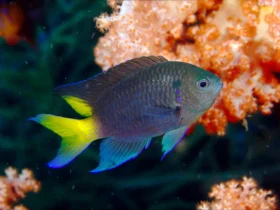The Oscar fish (Astronotus ocellatus) has earned a well-deserved reputation as one of the most striking and popular freshwater fish species in the aquarium hobby. With their vibrant colors, distinctive patterns, and unique personalities, Oscars have captivated fish enthusiasts around the world. In this article, we will delve into the captivating world of Oscar fish, exploring their characteristics, care requirements, and the joy they bring to aquarium enthusiasts.
Oscar fish images











Appearance and Personality
Oscar fish are known for their impressive size and stunning appearance. They possess a sleek, elongated body with a wide and oval-shaped head. Their coloration can vary significantly, ranging from vibrant shades of orange, red, and yellow to more subdued hues of brown and black. The body of an Oscar is adorned with intricate patterns, often featuring black, orange, or red patches, and a distinct eye-catching eyespot or “ocellus” on their dorsal fin.
Beyond their striking appearance, Oscars also possess unique personalities. They are intelligent, curious, and highly interactive fish. Many enthusiasts describe them as having distinct “personalities” and the ability to recognize their owners. Oscars are known to respond to human presence and may even develop a bond with their caretakers. They can exhibit a range of behaviors, from being playful and active swimmers to displaying territoriality and establishing their own distinct territories within the aquarium.
Care Requirements and Aquarium Setup
Providing the appropriate care and environment is crucial for the health and well-being of Oscar fish. Due to their large size, Oscars require a spacious aquarium with a minimum capacity of 55 gallons (208 liters) for a single fish. As they grow, a larger tank may be necessary to accommodate their needs. A well-maintained filtration system is essential to keep the water clean and ensure optimal water quality.
In terms of water parameters, Oscars prefer temperatures between 74-81°F (23-27°C) and a pH range of 6.5-7.5. Regular water testing and maintenance are essential to maintain these parameters and ensure the overall health of the fish. Providing suitable hiding spots, such as caves or driftwood, can help mimic their natural habitat and give Oscars a sense of security.
Feeding and Diet
Oscars are opportunistic feeders and have hearty appetites. They are known to devour a variety of foods, including pellets, flakes, live or frozen meaty foods (such as bloodworms, brine shrimp, and small fish), and even some vegetable matter. A balanced diet is crucial for their health, so a mix of high-quality commercial foods supplemented with occasional live or frozen treats is recommended.
Breeding and Reproduction
Breeding Oscars in captivity can be a rewarding but challenging endeavor. To encourage breeding, it is important to provide a separate breeding tank with appropriate conditions, such as slightly warmer water and suitable spawning sites. The male will typically choose a flat surface to lay eggs, which the female will then fertilize and guard. After hatching, the parents will care for the fry, but they may need to be separated to prevent aggression.
Oscar fish, with their striking appearance, unique personalities, and engaging behaviors, have become highly sought-after additions to freshwater aquariums. Their vibrant colors, distinct patterns, and interactive nature make them a centerpiece for any aquatic enthusiast. By providing the appropriate care, suitable environment, and a balanced diet, aquarists can enjoy the beauty and companionship of these majestic fish for many years. So, dive into the captivating world of Oscar fish and witness the enchantment they bring to your aquarium.








